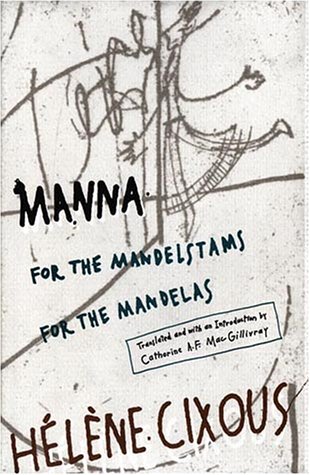continent. 4.3: Intangible Architectures (2015)
Filed under journal | Tags: · architecture, community, language, resistance, space, state

“This issue of continent. deals with the theme of intangible architectures. While in keeping with the theoretical and experimental nature of previous issues, this release intends a balance with an urgent grounding in current events, political schemas and areas of research that demand broadened dialogue. An underlying conversation represents some response to the tension that is enabled through systems that shape experience, behaviour and meaning – examining the imprints and traces that are left on our beings by these forms.
In some cases, this tension is manifest as social violence, where political and economic conditions are inseparable from the cultural expression of these structures. The idea of intangible architectures as political agents may relate to emergency states, militarised environments, questions of statehood and national borders, and the patterns of self-determining communities (Paul Boshears, Charles Stankievech, Ethel Baraona Pohl, César Reyes Nájera, Léopold Lambert). Architectures that are not yet constructed, and the rhetoric used to justify or oppose such development, are also revealing of the philosophy of private developers and communities of resistance (Lital Khaikin, Nathan Medema).
We may then find, after encountering these most immediate forms of intangible architectures, the spatial manipulations of social and intimate behaviour, laws, experiences, and memories. Architectural structures that do exist may yet conceal more complex frameworks, which exude laws that are autonomous to their initial, intended use. These subtle systems are encountered in liminal and transitory zones of city space, in artist-run exhibition spaces, in the homes that we recreate in our memories, in the emotional symbolism we create from structural space (Paolo Patelli, Giuditta Vendrame, Simone Ferracina, Sophie-Carolin Wagner, Tiara Roxanne).
But then, may we go deeper to find traces, mirrors of these intangible architectures, within language and more abstract experience of atmosphere? Do the systems by which we begin a construction of our understanding of the world – from phonemes to the cartographies that are charted in sonic atmosphere – not also shape our behaviours and relationships to space? (Kaie Kellough, Jason Sharp, Orit Halpern) In all cases, we are asked to consider the manifestations of structures that determine our experiences, interpretations and relationships to space. Let these be public or intimate – they engage the imagination equally, challenging us to think about the way these imprints affect our shared presence and relation to all beings.” (from Editorial)
Edited by Lital Khaikin, Paul Boshears, Jamie Allen, and Matt Bernico
Publisher continent., September 2015
Creative Commons Attribution 3.0 License
ISSN 2159-9920
Keller Easterling: Extrastatecraft: The Power of Infrastructure Space (2014)
Filed under book | Tags: · activism, architecture, city, design, economics, globalisation, governance, infrastructure, power, resistance, software, space

“Extrastatecraft controls everyday life in the city: it’s the key to power – and resistance – in the twenty-first century.
Infrastructure is not only the underground pipes and cables controlling our cities. It also determines the hidden rules that structure the spaces all around us – free trade zones, smart cities, suburbs, and shopping malls. Extrastatecraft charts the emergent new powers controlling this space and shows how they extend beyond the reach of government.
Keller Easterling explores areas of infrastructure with the greatest impact on our world – examining everything from standards for the thinness of credit cards to the urbanism of mobile telephony, the world’s largest shared platform, to the “free zone,” the most virulent new world city paradigm. In conclusion, she proposes some unexpected techniques for resisting power in the modern world.”
Publisher Verso, 2014
ISBN 1781685878, 9781781685877
252 pages
Reviews: Self (AR 2014), Wark (2014), Garrett (Antipode 2015), Chan (Art Papers 2015), Owens (Icon 2015), Coggan (Oculus 2015), Harwood (Artforum 2015), Barber (CAA 2018).
PDF (added on 2019-7-8)
EPUB, EPUB (3 MB, updated on 2019-7-8)
Hélène Cixous: Manna: For the Mandelstams for the Mandelas (1988/1994)
Filed under book | Tags: · biography, language, literature, poetry, politics, resistance

“They didn’t know each other, but they knew the same suffering.
A Russian Jewish poet who died in exile in Siberia; a South African political leader who survived his banishment to prison: The two men, Osip Mandelstam and Nelson Mandela, so far apart in time and space, are brought together in this story, their shared destinies unraveled in light of the Jewish and African diasporas.
In Manna, Hélène Cixous, a writer associated with the notion of écriture féminine and a major figure in Continental feminist practice during the 1970s and early 1980s, continues her disruption of the orthodoxies of politics and social order through the liberating use of poetic language. In this act of willful writing, by turns lyrical and intense, she links her two distant subjects through the common first syllables of their names, the dates of their respective exiles, and the women, Nadezhda Mandelstam and Winnie-Zami Mandela, who disclose and restore their partners’ lives through language.
For Cixous, politics is approached most openly and freely through poetry; no social change occurs without linguistic change. In Manna her poetic language mediates the historical, political, and personal narratives of Mandelstam and Mandela (two cores lodged in the heart of the world) to produce a new sense of individual tragedy and cultural possibility. An act of emancipation, exhilarating in the way it subverts the master texts of social and political power, this strange and beautiful book releases its subjects-and its readers-from the limited language of constraint and exile.”
First published as Manne aux Mandelstams aux Mandelas, Les Editions des Femmes. Paris, 1988.
Translated and with an Introduction by Catherine A. F. MacGillivray
Publisher University of Minnesota Press, 1994
ISBN 0816621144, 9780816621149
294 pages
via leninbert
Review: Clare Cavanagh (Slavic Review, 1997).
Comment (0)
